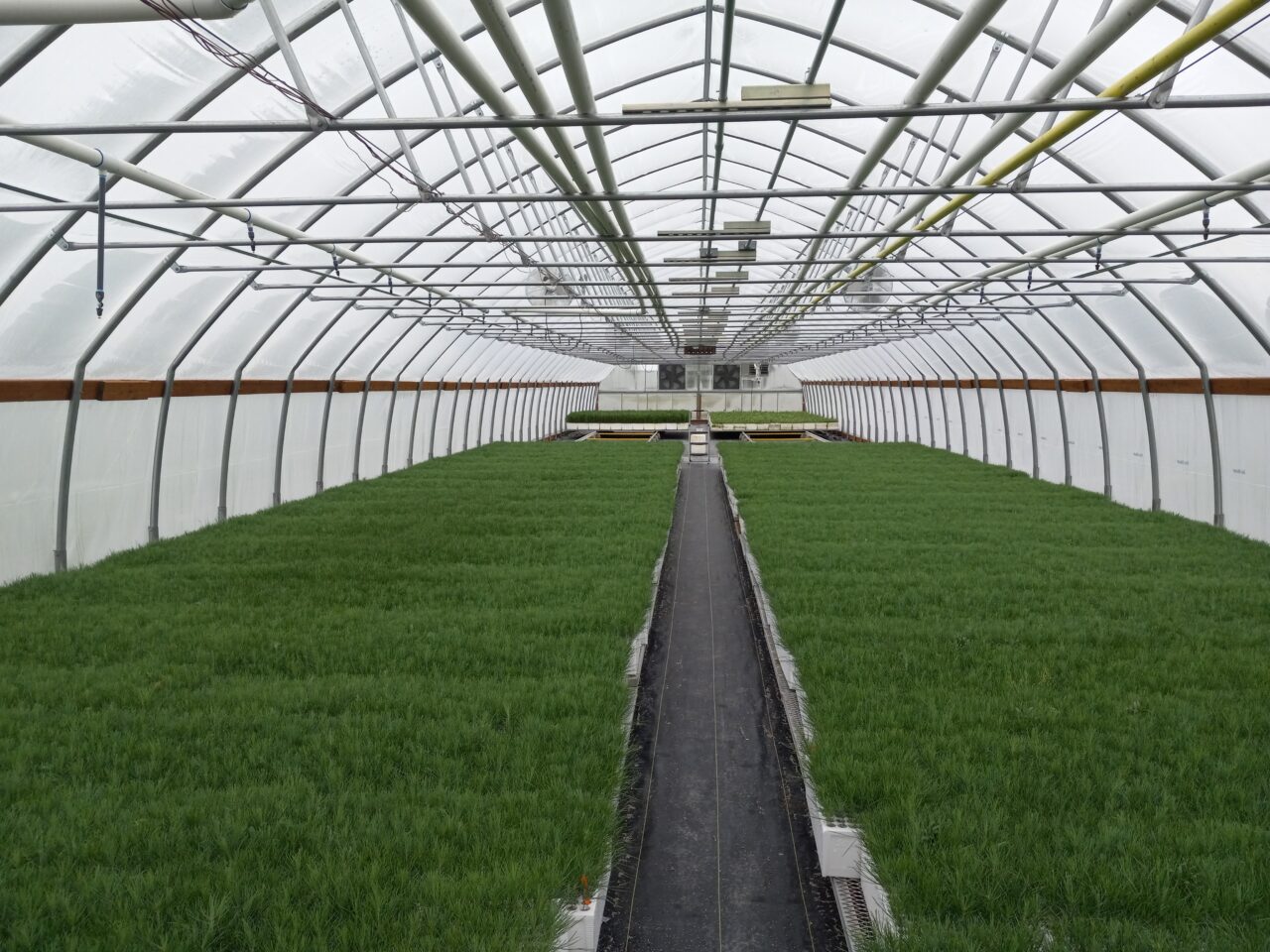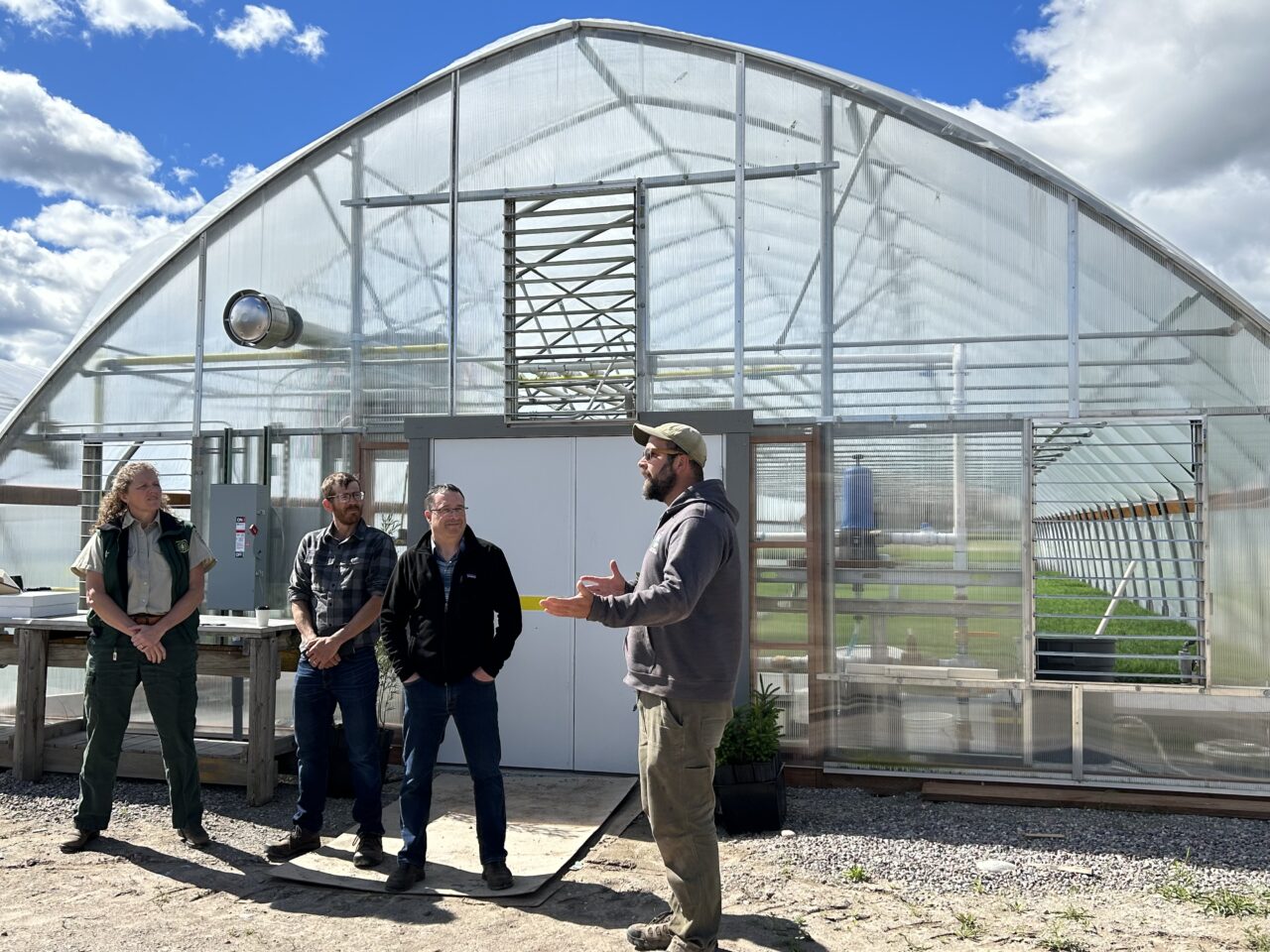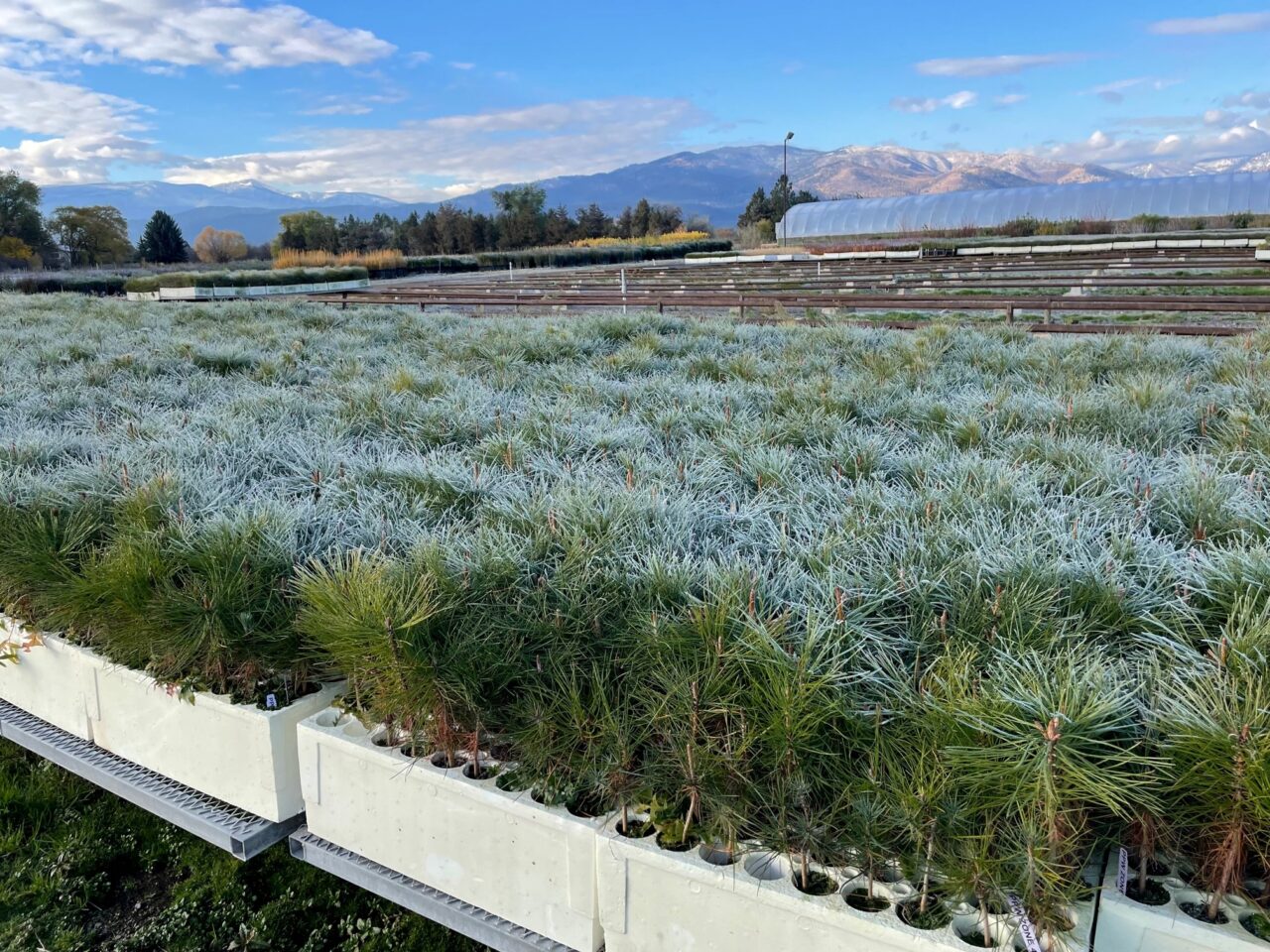Fire has always been a part of Montana’s landscape, but in recent decades, stronger, hotter fires have decimated the state’s forests. In 2020 alone, nearly 380,000 acres burned across public, private and Tribal lands in the state.
Recovery for these and other forests across the U.S. means restoring the landscape. This often involves planting new trees and understory plants after large, high-severity wildfires have limited forests’ ability to naturally regenerate. But limited numbers of nurseries are impacting the pace of reforestation, even as fires continue to burn.
A new greenhouse at the Montana Conservation Seedling Nursery in Missoula is helping bolster forest restoration on public, private and Tribal lands in the state. The 4,320-square-foot Anaconda greenhouse—named after a mountain range in the state—is projected to grow hundreds of thousands of trees each year to help reforestation efforts. The Anaconda greenhouse, built at a cost of approximately $230,000, was funded in part by two $100,000 grants contributed by American Forests and the USDA Forest Service.

Photo Credit: Ashley Mattson / Montana DNRC
The greenhouse will be operated by the Montana Department of Natural Resources and Conservation.
“There’s clearly a need for more seedlings and plants for reforestation because of bigger and bigger severe fires,” says Matt Arno, the bureau chief for the DNRC’s Forestry Assistance Bureau. “It’s great to get help to put up a new greenhouse that gives us added capacity to meet that need.”
Reversing the Trend
The Anaconda greenhouse is adding to the nursery’s four current greenhouses and will be able to grow an additional 239,000 seedlings each year. Compared to the need for reforestation, both here and outside the state, these numbers might not seem huge, says Wes Swaffar, who directs American Forests’ work in the Northern Rockies. But the greenhouse is an effort to reverse a sharp decrease in the number of nurseries that can grow young trees for the reforestation pipeline.

Photo Credit: Anna Lau
In recent decades, numerous nurseries across the country have closed, including dozens of state and federal nurseries, with 28 nurseries lost in the southern U.S. alone since 1995. While existing nurseries have tried to boost production, now growing about 1.3 billion tree seedlings to plant 2.5 million acres each year, the need for trees continues to grow, outpacing the number of available seedlings.
This problem is particularly acute for private landowners in Montana, Swaffar says. While many existing programs, along with staff and support, are dedicated to reforesting public lands, “Accessing that assistance can be much harder if you’re a Tribal national or private landowner,” he says.
The DNRC’s nursery, along with its new greenhouse, is working to provide seedlings for these clients, and often develops lasting relationships that can be part of a long-term plan to restore landscapes. For more than two decades, the DNRC has partnered with the Northern Cheyenne Tribe, which has experienced multiple wildfires on the Northern Cheyenne Reservation in southeastern Montana.
Michael Butts, the nursery manager, says that to reforest these Tribal lands, “the Tribe needs millions of seedlings planted over the next couple of decades.” Before this year, the nursery was able to provide the Tribe with between 300,000 and 400,000 seedlings annually—an effort that American Forests has contributed to by covering the Tribe’s nursery costs during the 2022-2023 season. The addition of the Anaconda greenhouse means that the nursery can grow more than 500,000 seedlings for the Northern Cheyenne each year.
Seeding the Future
During a recent celebratory grand opening, the new greenhouse was already growing 102,000 ponderosa pine seedlings—one of the many species that the nursery grows that is naturally adapted to fire. In the past, ponderosas, with thick, fire-resistant bark, typically coexisted with smaller, less-severe fires that would burn away grasses, brush, and smaller trees, leaving open stands of mature trees. But bigger, hotter fires have threatened the ponderosa’s ability to reproduce. “The intensity of mega fires is burning the natural seed bank out,” Butts says. “They’re killing the seed that would be used for regeneration.”

Photo Credit: Ashley Mattson / Montana DNRC
That’s where the nursery comes in. Along with greenhouses, the 60-acre nursery includes a seed bank that stores and propagates seeds from native trees and plants. Some of the landowners that the nursery works with, including the Northern Cheyenne Tribe, collect cones from the trees remaining on their land and ship them to the nursery, which then grows seedlings that will ultimately be planted in their native habitat.
Since 2023, the nursery has also been collecting seeds and planting fields to create seed mixes for the grasses, wildflowers, and shrubs that are a natural part of how a forest returns following a fire. “When you’re out there reforesting, you want to think about succession. This landscape had a major wildfire—what naturally would happen?” Butts says. “If you’re using an appropriate native seed mix, you can help allow bigger trees to grow to maturity without being overtaken by invasive species and erosion.” The first seed mixes that can be planted as part of reforestation will likely be available in 2026, he says.
Growing possibilities for Montana’s forests are also on the horizon. The Forest Service recently awarded $12 million to American Forests to help Tribes and underserved communities in multiple regions across the U.S. access resources and private markets for resilient reforestation. In Montana, American Forests and Montana DNRC will work together to identify eligible landowners, collaborate with partners and federally recognized Tribes and provide technical assistance for reforestation to landowners. “American Forests have been an awesome partner, and there are good things in the works,” says Butts.